There's nothing better than introducing students to another culture and watching their world grow in front of your eyes.
But with that comes the responsibility of making sure they're aware of any serious cultural faux-pas (so they can avoid it).
And that's where our guide to travel etiquette for school groups visiting Sri Lanka comes in. We'll help you and your students navigate the cultural differences (without inadvertently causing offence).
Greetings
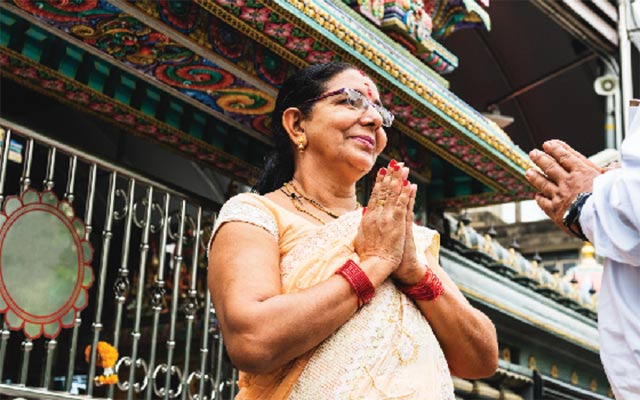
How should we greet people in Sri Lanka?
This is one you can get your group prepped for in advance. The traditional greeting in Sri Lanka is to press your palms together under your chin and in front of your chest, while slightly bowing your head.
What you say as you do this will depend on the ethnicity of the person you are greeting.
If you want to play it safe (and this is by far the easiest for students to get their head around), you can say ‘Namaste’, which is Hindi and is used commonly here.
If you know for sure that the person you’re greeting is Sinhalese, you can say ‘Ayubowan’ and if they’re Tamil, ‘Vanakkam’. But 'namaste' is perfectly acceptable to everyone and the best option to avoid confusing students.
In more informal situations, you may also notice people say ‘kohomada’, which means ‘how do you do?’.
Should you shake hands in Sri Lanka?
Handshakes are common in Sri Lanka, but there are some guidelines to be aware of - the most important being that intersex handshaking (i.e. men shaking hands with women) is not common.
Now, your students probably aren't keen handshakers anyway (if our teens are anything to go by), but this is one to make accompanying staff aware of.
Now, having said that, handshakes between men and women aren't totally off the table. If you're a man greeting a woman and she offers her hand, it's totally acceptable to shake it (in fact, you'd offend her if you didn't, at this point).
And if you're a woman greeting a man, you should feel free to offer your hand for a handshake if you are comfortable with this (just remember that the man will be waiting for your cue and won't offer his hand first).
How should we address people in Sri Lanka?
This is an important one for everyone on the trip to be aware of. When you first meet someone, you should always address them by their title and surname, as these are highly valued by Sri Lankans (possibly even more so than in the UK).
This should be fairly easy to remember for your students, as they're usually expected to refer to you, their teachers, by title and surname (unless you come from a very laid-back school, of course).
Now, if they then suggest that you're on first-name terms (either by saying so explicitly or by calling you by your first name), then you can go ahead and start calling them by their first name.
How should we dress in Sri Lanka?
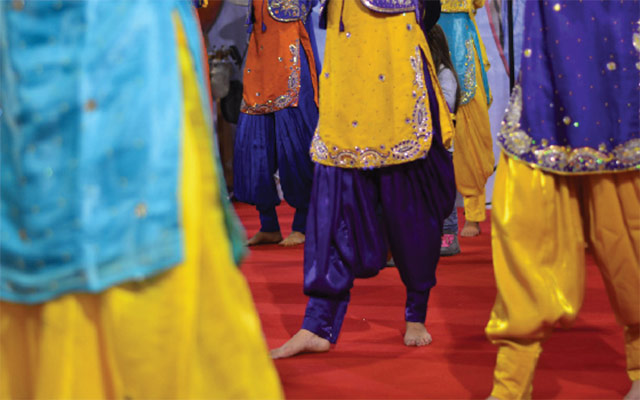
If you're planning a trip to Sri Lanka, we can almost guarantee you're going to be bombarded by parents asking you this question when the time comes to think about packing. So, we've dedicated a whole section of this guide to making sure your group are suitably dressed on your trip.
Is there a dress code we should follow in Sri Lanka?
So, firstly, the good news is that the Sri Lankan attitude to dress is fairly relaxed.
However, all Sri Lankans (and we're talking about men and women here) tend to dress modestly. We'd recommend trying to do the same to make sure that you don't inadvertently make locals uncomfortable.
What does 'modestly' mean in Sri Lanka? Generally, it means covering everything from the shoulders to the knees. So, t-shirts, long shorts and mid-length skirts are probably fine (vest tops, mini skirts and tiny shorts, not so much).
What do we need to wear to enter a Sri Lankan temple?
You'll almost definitely visit a Buddhist or Hindu temple on your trip, as the diversity of religion in Sri Lanka is key to understanding the culture. But what should your group wear to enter these places of worship?
To be honest, as long as you all dress modestly (i.e. you're covered up from shoulders to knees), you should be OK. And some temples will just hand out sarongs if not (if you have space in your luggage, encouraging everyone to pack a thin sarong just in case is a great shout).
You'll also need to remove hats and shoes before entering a temple (and FYI, shoes must also be removed when entering someone’s home).
One thing that is extremely important to make your group aware of - they should not wear any clothes that depict Buddha (or any other deity, for that matter). Although especially important when visiting temples, it's a good rule to follow in general in Sri Lanka, as it will cause offence to some.
Anything else we should know?
It’s unlikely to affect your students, although perhaps some members of staff may have some ink, so it’s worth mentioning that tattoos depicting Buddha are really offensive to Sri Lankans.
In fact, they have in the past led to foreign tourists being refused entry or even deported - so, if any member of the group does happen to have one, it’s super important to keep it covered at all times.
Out and about with your school group in Sri Lanka
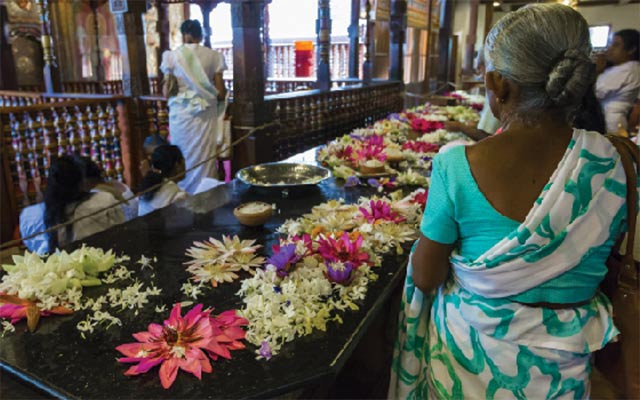
How can we avoid causing offence in Sri Lanka?
While out and about, it’s really important to remember that any mistreatment of Buddhist images and artefacts is a serious offence.
We've already mentioned that you should avoid wearing any depictions of Buddha on your clothes or skin.
But you'll also need to make sure your group is aware that they must also avoid pointing their feet or turning their backs on statues of Buddha.
Are there any rules on taking photos in Sri Lanka?
You can usually take pictures of statues of Buddha, but you must make sure that anyone in the photo is facing the statue (and not stood alongside it or with their back turned to it).
As that might be difficult to organise with bigger school groups, it might be advisable just to avoid the situation altogether - there'll be plenty of other opportunities for some great group shots for the 'gram.
And, like many countries around the world, you should definitely avoid taking photos of military bases, government buildings or vehicles used by VIPs.
It’s also polite to ask people before you take a photo of them (although, don't be surprised if they ask for money to be in your photo).
Which hand should we use for shaking hands and eating in Sri Lanka?
Traditionally (and, as is the case in much of Asia), the left hand is reserved for cleaning yourself after visiting the toilet.
So, make sure your group are all aware that they should only use their right hands when eating, shaking hands or passing someone something. Of course, if something is heavy, then you can use both hands (without risk of offending anyone).
Anything else we need to know about etiquette in Sri Lanka?
Quite a big cultural difference between Sri Lanka and the UK is the way the body is regarded - the head is considered the most sacred part of the body, and the feet the dirtiest.
This means you should avoid touching people (especially children) on the top of the head.
And you should avoid pointing the bottoms of your feet at people (or statues of deities) or putting them up on the furniture.
If you do need to point at something, use your whole hand rather than your index finger (because this is very rude in Sri Lanka).
And we highly doubt this next bit of advice is going to be needed, but it might be worth making your group aware that if they do end up in a disagreement with a local for any reason, they should really try to avoid raising their voice. In Sri Lankan culture, being shouted at would cause that person to lose face (which is a massive deal).
Food and drink

Will it be easy for our vegetarians to find plenty to eat in Sri Lanka?
Many Sri Lankans do eat meat and fish (although not on religious holidays).
However, there's also loads of delicious vegetarian food available in Sri Lanka, and we've always found Sri Lankans to be very accommodating for vegetarians.
Will we need to eat with our hands in Sri Lanka?
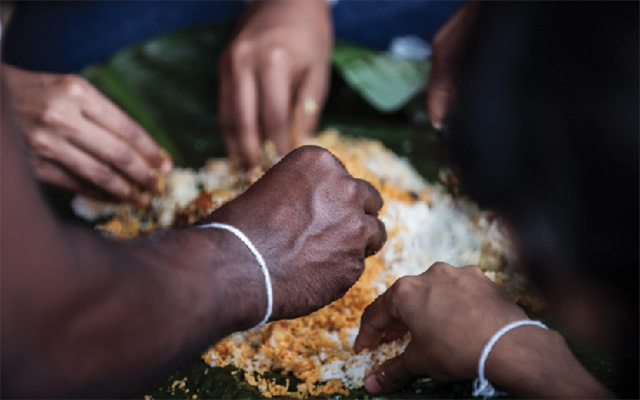
Culturally, Sri Lankans don't use cutlery - instead they eat with their right hand.
Now, many restaurants will bring you cutlery if you ask for it, but why not give it a go? This is a great opportunity for your school group to literally get hands-on with Sri Lankan culture.
The trick is to mix the rice and curry together, and to then roll small balls with the forefingers of your right hand. When you’ve finished, don’t lick your fingers (this is really rude) - there will normally be a sink provided for washing hands.
With all that in mind, it shouldn't really come as a surprise to learn that you'll all be expected to wash your hands before serving food or eating too (whether in a restaurant or at a private home).
Should we clear our plates at the end of a meal in Sri Lanka?
So, here's another important cultural difference for your students to be aware of when visiting Sri Lanka.
If they completely clear their plate at the end of a meal, your host will think they're still hungry.
If they've had enough, they should leave a little bit of food on the plate (easier said than done, we know) to show that their hunger has indeed been satisfied.
Is it easy to get hold of alcohol in Sri Lanka?
One reason Sri Lanka makes such a good choice for a school trip is that it's actually quite difficult to get hold of alcohol.
And there isn’t much of a local drinking culture, because the key religions here disapprove of alcohol. So, you'll find it rare even for alcohol to be served with meals.
So, while it's always important to be vigilant, it should be fairly easy to keep your students away from alcohol on your trip to Sri Lanka.
Gifts
What’s an appropriate gift for a Sri Lankan?
Want to get your guide a gift before you leave to let them know how much your group appreciated them?
Rule number one when picking gifts - avoid flowers (these are generally reserved for funerals, weddings and other religious events).
And it’s a good idea to avoid giving alcohol unless you're absolutely sure that the recipient drinks (many, if not most Sri Lankans, don't).
The other thing to remember when choosing a gift from your group to a Sri Lankan is making sure you're aware that a person's religion can dictate what is and isn't appropriate.
To be on the safe side, we'd advise avoiding anything containing pork or alcohol (both are inappropriate for Muslims) and anything derived from cows, such as leather (as this is inappropriate for Hindus).
When giving a gift, remember to use both hands. And don’t be offended if the recipient doesn’t open the gift immediately (this is the cultural norm here).
Visiting temples with your school group
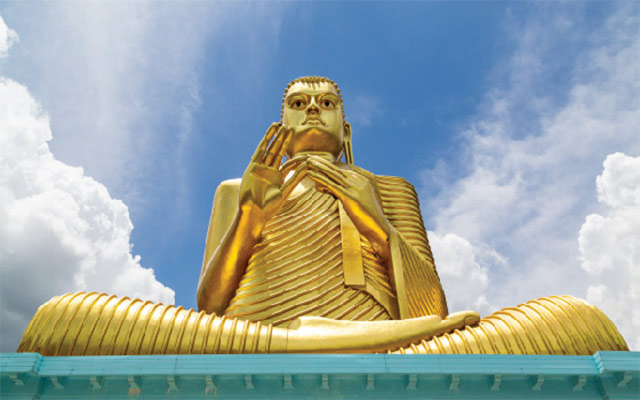
Is Sri Lanka a religious country?
Sri Lanka is a very religious country.
70% of the population are Buddhist, and most of the rest of the population follow Hinduism, Islam or Christianity. It's this religious diversity that makes it such a fascinating destination for a school trip - but it also means you do need to make sure that your group is aware they need to be sensitive to all of these religions when travelling around Sri Lanka.
What do we need to know about visiting Buddhist temples in Sri Lanka?

As we've touched upon, to enter a Buddhist temple, your group will need to be dressed appropriately, which means covering legs (to below the knee) and shoulders. Some temples visited frequently by tourists may have sarongs available and it's also a great idea to pack one if you have space.
You'll also need to take off your hats and shoes. However, the temple floors can sometimes get really hot under the sun – if this is the case, you’ll be relieved to know that wearing socks is perfectly acceptable.
We've also already mentioned that you should avoid turning your back to, or standing alongside a statue of Buddha - but it's worth repeating and making sure your group are very aware of how offensive this is to Buddhists.
If you do want to bring an offering, lotus flowers are a good choice.
And remember, this is a place of worship, so please do remind students to keep their voices down, so they don't disturb anyone in prayer.
What do we need to know about visiting Hindu temples in Sri Lanka?
The same dress code applies to Hindu temples - so you'll need to be dressed modestly (i.e. covered shoulders and legs to below the knee, plus hats and shoes will need to come off).
When it comes to entering the inner shrine, you should be aware that in some cases this is off-limits to non-Hindus. In other cases, men must remove their shirts, and sometimes women are not permitted to enter. Honestly, unless you're with an experienced guide, it's probably best to avoid the inner shrine so that you don't accidentally offend worshippers inside.
Is there anything else we need to know about visiting temples in Sri Lanka?
At some temples, you'll be shown around by a resident priest or monk. In this case, you'll be expected to make a donation (so, it's worth making sure students have small amounts of cash available for this).
At other temples, you may find unofficial guides keen to show you around - they will want to be paid for this service. However, it's really important to say that you shouldn't feel pressured into accepting these services (unless you want to).
Interested in visiting Sri Lanka on a school trip?
We hope this guide has been useful. If you are interested in visiting Sri Lanka on a school trip, please don’t hesitate to contact us for further information.